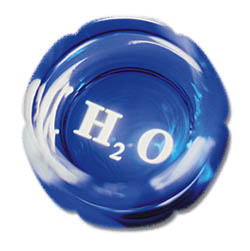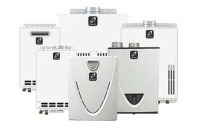
Are you sitting down? Because I've got a doozy for you: The Home Depot helped get stricter plumbing codes adopted for water treatment products and installation.
Not intentionally, of course. The Home Depot and other big boxes were selling do-it-yourselfers a wide variety of plumbing and water treatment products that were "garbage," says Julius Ballanco, president of JB Engineering and Code Consulting, P.C.
"Some of these products were very dangerous; one product contained activated charcoal, which improves the taste of water but promotes the growth of bacteria," he explains. "Another company had a product that was poisoning people."
Training was also an issue. While professional plumbers are trained in water issues, the average consumer is not. And every plumbing law in the country states that, if you own your own home, you can make your own repairs. DIYers are supposed to have a permit, but such a provision is not enforced. And while most equipment instructions try to include local plumbing codes, we all know most men don't read instructions.
"The lack of proper training had some DIYers cross-connecting sewage lines to drain lines," Ballanco notes. "These incidents had the industry up in arms."
Another part of the problem concerned the national plumbing codes, which had long ignored the special needs of this industry segment. Many inspectors considered water treatment to be subject to plumbing codes written more for piping and standard plumbing equipment installation.
In 1997, the Water Quality Association began working to develop and make changes to the plumbing codes. The association worked closely with NSF International, formed a plumbing code task force and hired the late Pat Higgins as a code consultant to lobby for the changes.
These standards, which cover all parts that touch water, were adopted last year and are included in the most recent editions of the International Plumbing Code and the Universal Plumbing Code. The main provisions include:
- Water treatment devices are now recognized in both codes in special sections, with a WQA-written definition included. This is the first step in differentiating point-of-use or point-of-entry installation issues from standard plumbing devices.
- Air gap faucets are recognized separate from, and with different requirements than, traditional air gaps.
- RO tubing size and material decisions are the domain of the equipment manufacturers, not local code inspectors.
- Each POU or POE water product must be certified through companies such as NSF, Underwriters Laboratories, Spectrum Labs and the WQA. Products must be recertified every five years.
- A licensed plumber must install water connections.
The only issue not addressed in the codes at this time concerns saddle valves. The national plumbing codes prohibit the use of saddle valves, even though they are widely used in the POU/POE and other industries. Higgins suggested an alternative might be to develop and set standards for saddle valves as the first step in lifting the prohibition. It remains to be seen whether the code bodies will change their views.
Building Industry Confidence: Testing and certification is available for water softeners, reverse osmosis systems, distillation units, carbon filters and ultraviolet microbiological systems. Equipment that meets testing and certification standards will be marked by the testing agency.
"Standardized certification will go a long way to build confidence in the water treatment industry," says Joe Harrison, a WQA spokesman. "The major manufacturers have their products certified, and most people buy these certified products."
Ballanco adds: "We need to keep promoting the idea to plumbers that selling these tested and certified products can be lucrative because the public wants them."
One of the pioneers of the testing and certification of water treatment products is the WQA. In 1960, the U.S. Department of Housing and Urban Development approached the organization to develop a program of testing the performance and materials of water treatment equipment. And the Gold Seal program was born. Only those systems that have met or exceeded industry standards for contaminant reduction performance, structural integrity and materials safety are awarded the Gold Seal.
Another long-time water treatment certifier is NSF International. In 1968 it was asked by state drinking water administrators, and later by the U.S. Environmental Protection Agency, to develop consensus standards and certify health and aesthetic contaminant reduction claims for drinking water treatment units. NSF verifies contaminant reduction claims made by the manufacturer, tests products' structural integrity and assesses the health effects of all materials in contact with water.
While Underwriters Laboratories began its Drinking Water Treatment Unit testing and certification program in 1998, it has been testing and certifying plumbing products for more than 90 years. And UL recently bought Environmental Health Laboratories, a South Bend, Ind.-based facility that tests and analyzes drinking water for compliance with the Safe Drinking Water Act.
What The Fuss Is All About: Why is the quality of household water so important? Because the 2001 National Consumer Water Quality Survey reports that almost 90 percent of American consumers have some sort of "drinking problem" with their tap water. The study, commissioned by the WQA, states that concern about water quality is at an all-time high and nearly half of those consumers want stricter federal drinking water laws.
Almost one in three respondents say they believe their household water isn't as safe as it should be; one-half of adults are concerned about possible health contaminants in their water and 42 percent are worried about sediments. Parents of children under 12 seem to be especially concerned; 55 percent of them said that becoming a parent caused them to have additional concerns about the quality or safety of their household tap water.
And consumers don't mind the extra expense to ensure clean water in their homes; more than 60 percent would be willing to pay more on their utility bill or for home water treatment. In fact, 41 percent of consumers surveyed are using home water treatment devices compared to the 25 percent cited in the 1995 survey. Bottled water use remains at a steady 39 percent.
Satisfaction with home water treatment is high (95 percent), and 55 percent said they would be more likely to buy a house with a water treatment device. In fact, many new houses under construction now plumb for water purification, making it easier for builders to upsell water quality systems, says Terry Dotson, vice president/sales at United Pipe and Supply Co., a Portland, Ore. wholesale distributor.
"Water purification as a whole is on everyone's mind," he notes. "Every office seems to have some type of system these days, rural homeowners are looking for ways to eliminate iron and chemicals from their water supplies, and city dwellers are looking for better tasting water and color clarity."
The prevalence of the water purification industry can be attributed to the abundance of information consumers are exposed to, Dotson explains - information from the government, the Internet and cable television, as well as from the manufacturers themselves. "It's not that consumers distrust their local water supply; it's that advertising has taken over and told them that purified water is better for them."
United Pipe and Supply has been in the water treatment business for about 15 years, and water treatment accounts for roughly 12 percent of its overall business, including ultraviolet systems, filters and filtration systems, and chemical pumps. The company has seen a slight decline in this business in the last year, mainly because of the new codes.
Two-thirds of United's dealer base consists of pump installers who worked in the rural areas of Washington, Oregon and Idaho; one-third consists of plumbers. As a result of the new plumbing codes, United's pump installers have been unable to install many of the company's water treatment products. On the other hand, its plumbing customers have been very busy with these very same products.
"Water treatment is a vital part of our business," Dotson says. "So our intention is to target the licensed plumbers in our market area who are installing such products right now. We want to tell them about the opportunities at United Pipe for training, certification, product knowledge and competitive pricing."
United Pipe, a member of WQA, provides an eight-week training course for its dealers on the products and installation of water treatment products. The company works with its dealers to make sure they know everything they need to know to install a water treatment system properly.
"With an application to meet every need of the end user, there is a great opportunity for growth in water treatment," Dotson states. "To capitalize on the information in the industry and the growth potential, it is important that we as wholesalers set down specific goals with our manufacturers, make sure the market is there and determine how much of the market we can handle."


